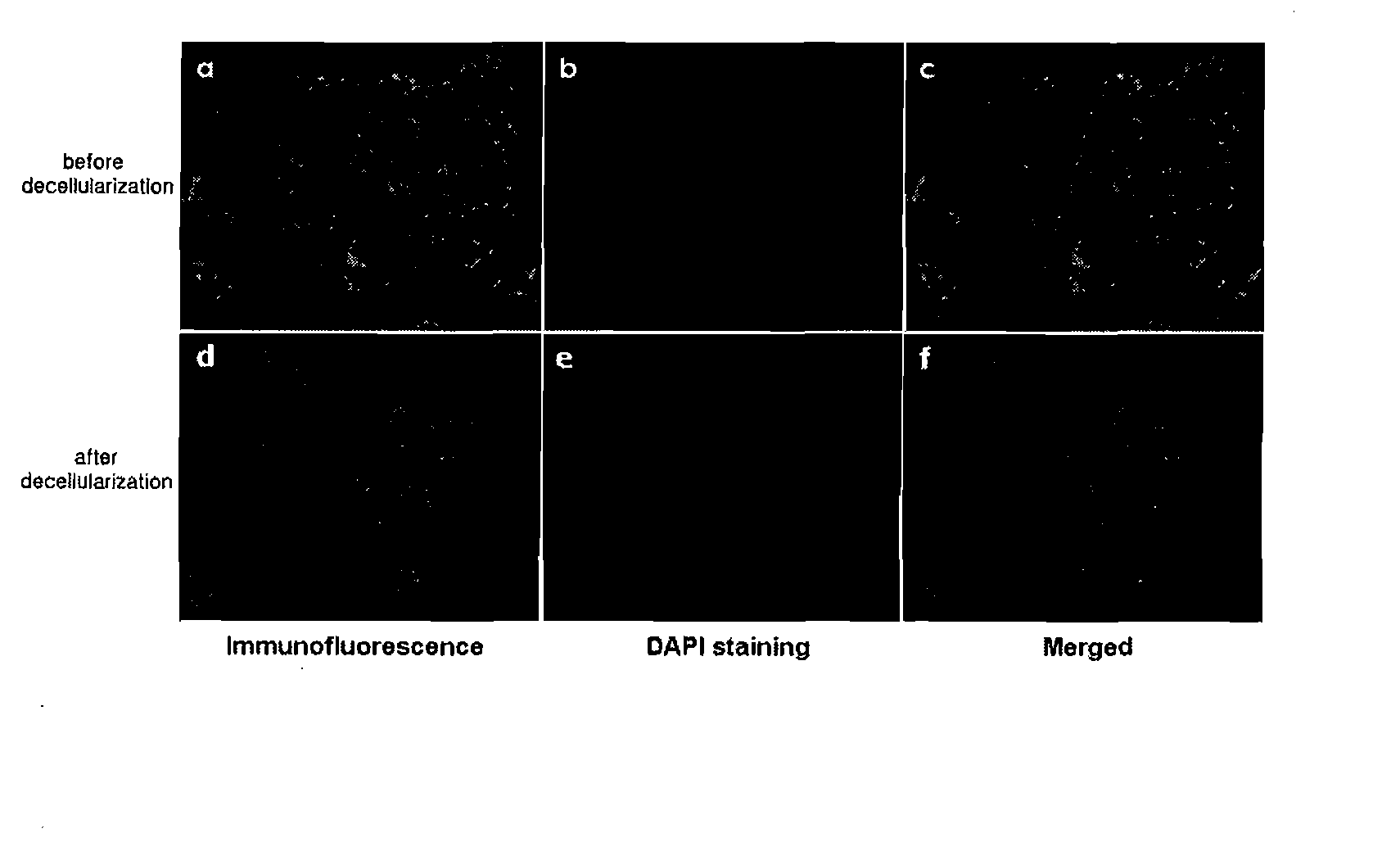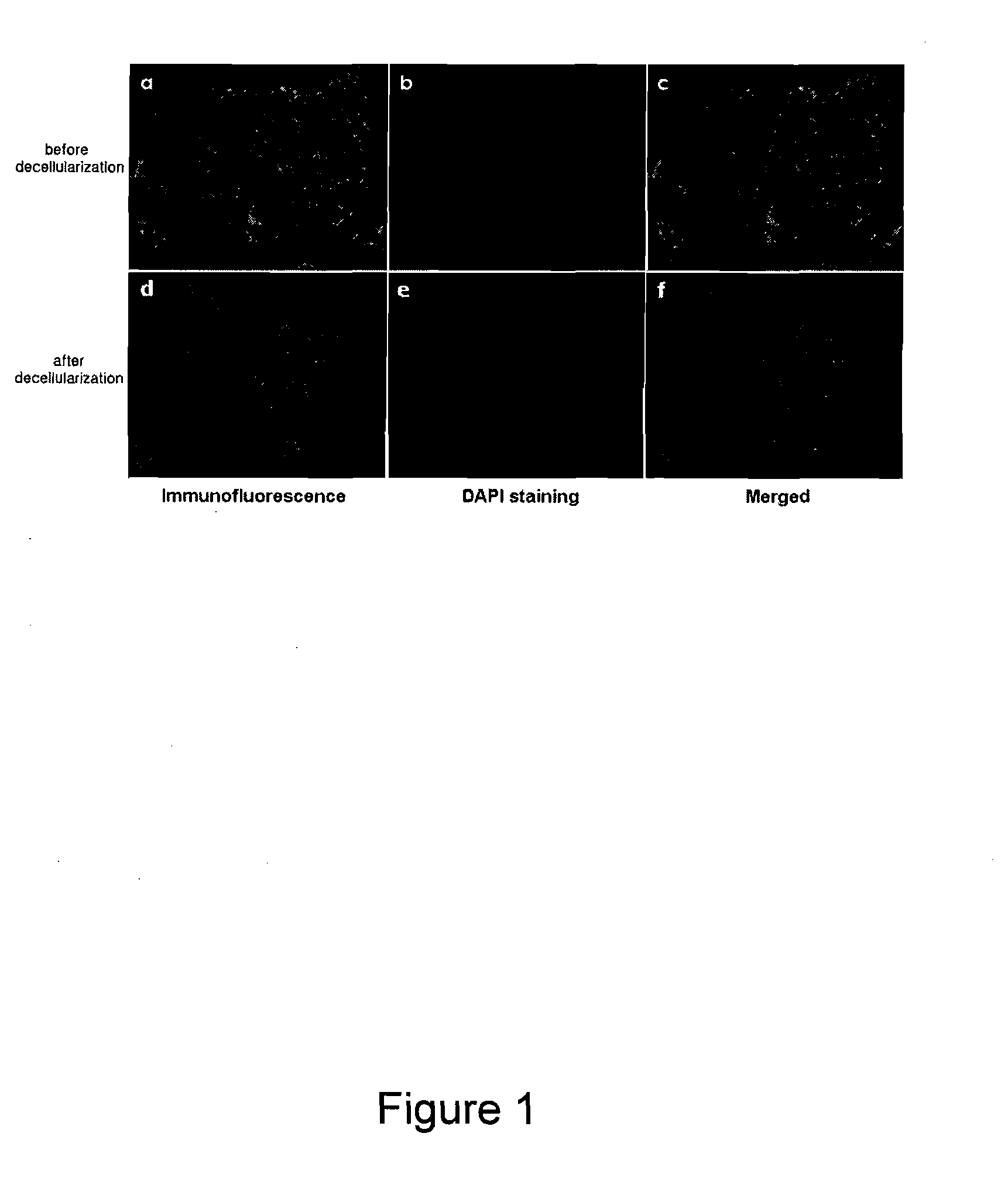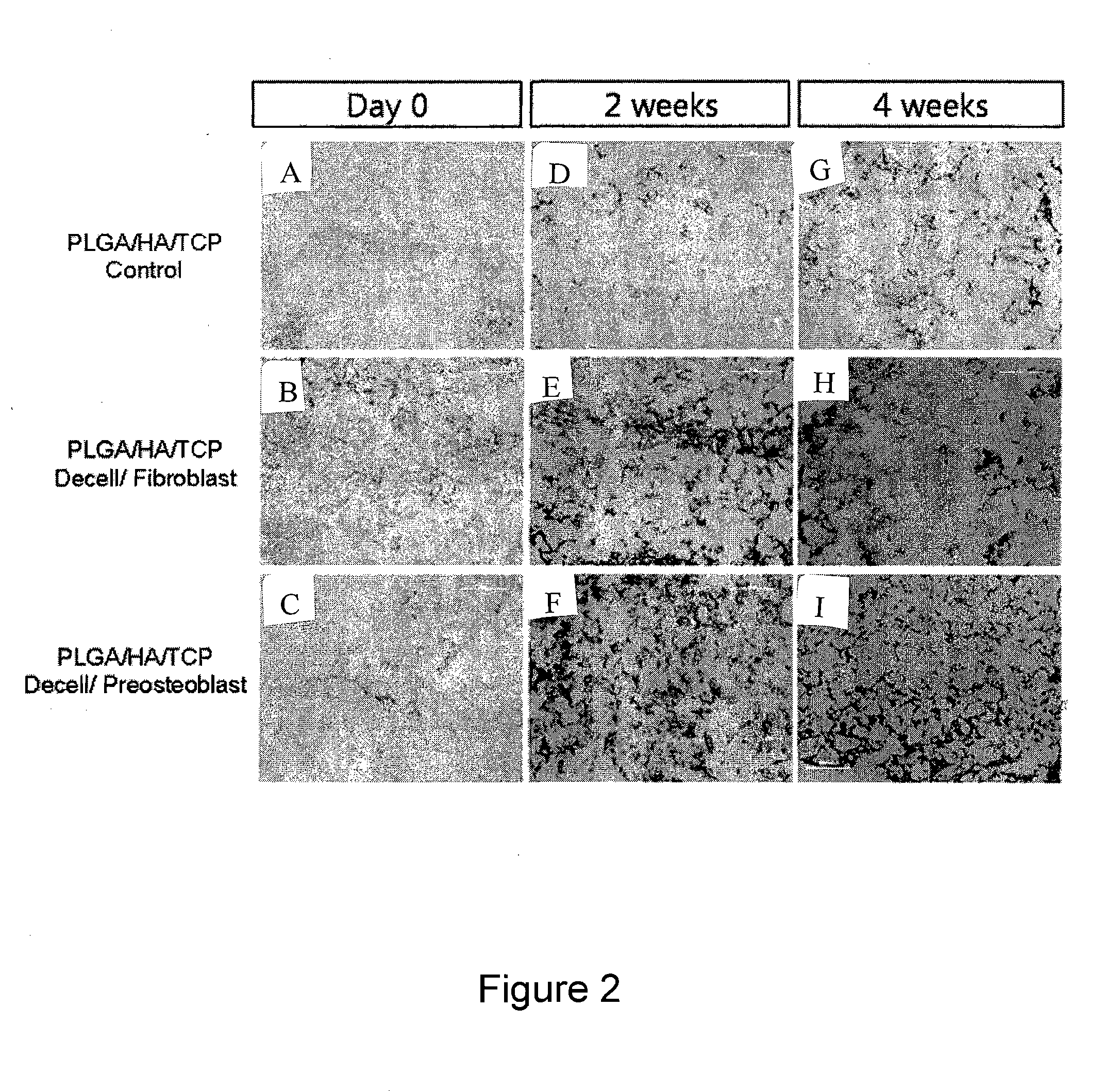Method for Surface Modification of Polymeric Scaffold for Stem Cell Transplantation Using Decellularized Extracellular Matrix
a stem cell and extracellular matrix technology, applied in the field of stem cell transplantation polymeric scaffold surface modification using decellularized extracellular matrix, can solve the problems of only partly effective approaches in ensuring cell adhesion and especially stem cell differentiation, and the current surface modification technology has limitations in creating a biomimetic surface environmen
- Summary
- Abstract
- Description
- Claims
- Application Information
AI Technical Summary
Benefits of technology
Problems solved by technology
Method used
Image
Examples
examples and experimental examples
Example 1
Surface Modification of Polymeric Composite Scaffold [PLGA / HA / TCP-Decellularization / Fibroblast]
[0033]1. Preparation of a Porous Composite Scaffold
[0034]Poly(lactic acid-co-glycolic acid) (PLGA, 75:25, molecular weight-110,000; Boehringer Ingelheim, Ingelheim, Germany) was dissolved in methylene chloride to give a 13% (w / v) PLGA solution. To this was added a mixture of the inorganic components, hydroxyapatite (HA) and β-tricalcium phosphate (β-TCP) in such an amount as to maintain a weight ratio of 1:0.2:0.8 for PLGA: HA: β-TCP. Meanwhile, sodium bicarbonate (NaHCO3) was sieved through the meshes to generate particles ranging from 200 μm to 300 μm in size. These particles were homogeneously blended with the mixture of PLGA solution and the inorganic components. The resulting blend was placed in a disc-shaped silicon mold, 8 mm in diameter and 2 mm in thickness, and rapidly frozen in liquid nitrogen. After a short period of time, the molded scaffold was taken out of the mold ...
example 2
Surface Modification of a Polymeric Composite Scaffold [PLGA / HA / TCP-Decellularization / Pre-osteoblast]
[0043]A decellularized composite scaffold was prepared in the same manner as in Example 1 with the exception that pre-osteoblasts were used instead of the fibroblasts of Example 1-3.
experimental example 1
Evaluation of Decellularized Composite Scaffold—DAPI (4′-6-diamidino-2-phenylindole) Staining and Immunofluorescent Staining
[0044]The following experiment was carried out to examine the decellularization of the composite scaffold.
[0045]The sterilized composite scaffolds prepared in Example 1 were divided into three groups and transplanted with cells at a density of 5×105 cells / scaffold [no cells transplanted (control), fibroblast NIH 3T3 transplanted, pre-osteoblast MC3T3-E1 transplanted], followed by incubation for one week at 37° C. in a 5% CO2 atmosphere. After decellularization, each scaffold was washed with PBS and fixed for 20 min with 4% paraformaldehyde. Again, it was washed for 10 min with PBS containing 0.3% Triton X-100. An OCT (optimal cutting temperature) compound (a widely used embedding medium prior to frozen sectioning) was added and one hour after the scaffolds settled on the bottom they were cryopreserved with the OCT compound permeated thereinto. The scaffolds wer...
PUM
 Login to View More
Login to View More Abstract
Description
Claims
Application Information
 Login to View More
Login to View More - R&D
- Intellectual Property
- Life Sciences
- Materials
- Tech Scout
- Unparalleled Data Quality
- Higher Quality Content
- 60% Fewer Hallucinations
Browse by: Latest US Patents, China's latest patents, Technical Efficacy Thesaurus, Application Domain, Technology Topic, Popular Technical Reports.
© 2025 PatSnap. All rights reserved.Legal|Privacy policy|Modern Slavery Act Transparency Statement|Sitemap|About US| Contact US: help@patsnap.com



